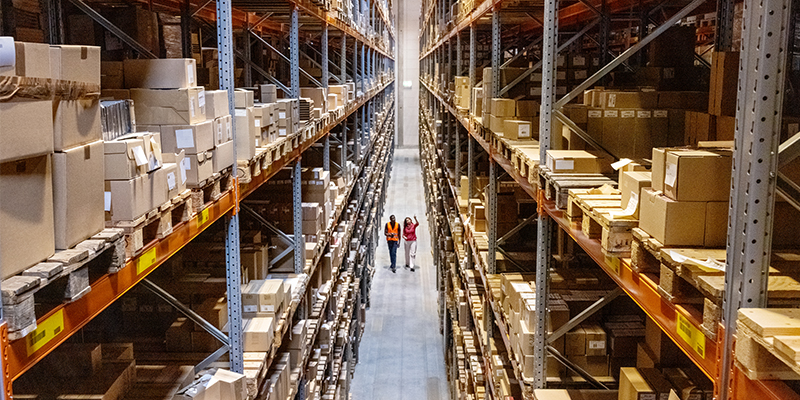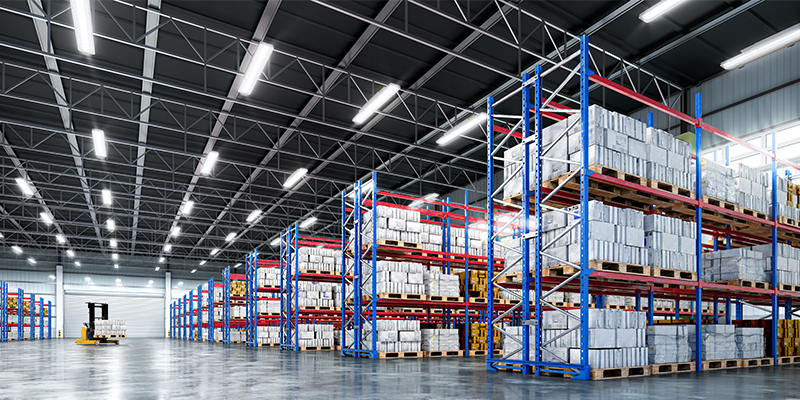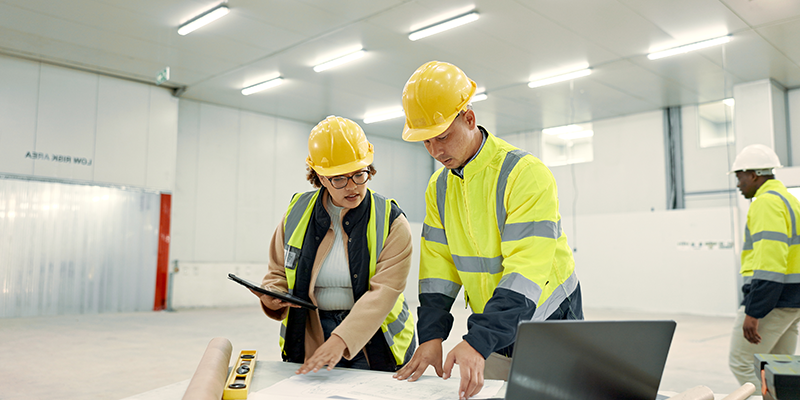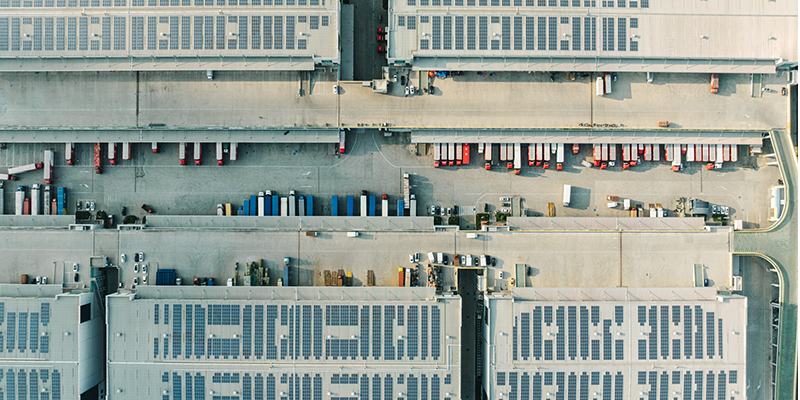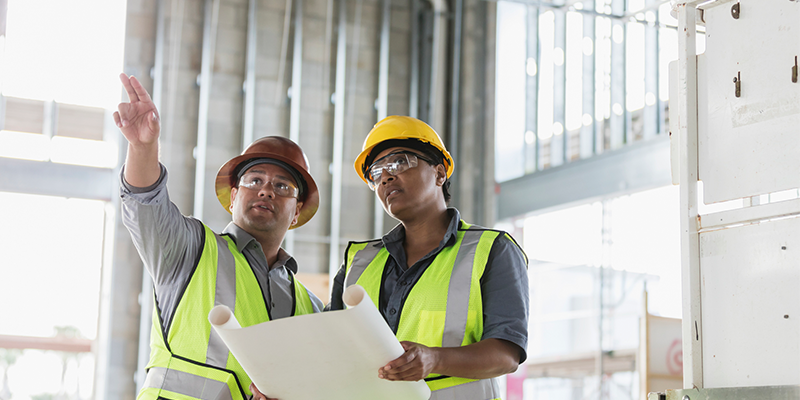By Brielle Scott
Supply chains have been in use for about 2,000 years. The Roman armies used them to move materials to the front lines of war. In modern times, supply chains continue to provide critical functions for a variety of purposes, including the exponentially growing world of e-commerce.
“These networks of physical facilities and buildings are meant to do something efficiently, which is move product and inventory in one direction – towards your house. But when something comes backwards from your house upstream towards the origin point, it breaks our systems,” said Chad Autry, Ph.D., Myers Professor of Supply Chain Management at the University of Tennessee at Knoxville, who spoke at I.CON West this week in Los Angeles.
Autry, the author of the NAIOP Research Foundation report “Reverse Logistics Strategies for the Post-pandemic Supply Chain: Spaces and Places to Recapture Value,” addressed the common challenges companies face in managing reverse logistics and the design features critical for optimizing the functionality of reverse logistics facilities.
The State of Returns
There are roughly 6 trillion sales transactions in the U.S. each year, and companies are starting to realize that there is value that can be recaptured from products if they are quickly reintroduced into the regular “bloodstream” of their supply chains.
So how can we make that system rebound a piece of inventory as quickly as possible?
“What it comes down to is a set of decisions that must be made very quickly when a piece of inventory comes back into a supply chain,” said Autry. These products must be classified extremely quickly: fix it, refurbish it, repackage it, or disassemble and/or recycle it.
Any repair, refurbishing of repackaging should occur in the distribution facility, not in the manufacturing facility, Autry said. Then the product is already at the level of distribution, close to the retailer and therefore easier to get back into the outbound supply chain. “And if I can do that quickly enough, I can capture value before the product becomes stale or out of fashion,” Autry added.
“If I don’t do the refurbishment, I’ve got to try to figure out how to disaggregate the product. I’ve got to figure out how to take it apart. That may be a really great value stream for a lot of businesses. Because if I can’t repair this, the amount of value I’ve got in the internal parts is still quite high.” For example, a smartphone may have one or two faulty components but be otherwise completely fixable.
But where does a disassembly line fit in a warehouse?
The Hybrid Reverse Logistics Distribution Center
“My proposal is that that system would be better served if there were more hybrid facilities,” said Autry. “Hybrid facilities in the sense that I can do both storage and light-to-heavy manufacturing inside those facilities. I might need to have small laboratory-like areas inside them, instead where I can disaggregate something and do so without humidity, worries without dust or pollution, and I can then quickly recover that value.”
If we were to rebuild our supply chain network, how would we rebuild it, knowing what we know now about returns? How would we rebuild a network if we could start over today knowing that backwards flows were going to be as important as forward flows? Autry shared some key design principles for a reverse logistics network.
These reverse logistics facilities:
- Are second-generation or older buildings. They don’t have to be Class A new construction buildings.
- Are in lower-rent areas than downtown premium real estate locations.
- Do need some degree of modest power – not as much as heavy manufacturing, but enough to operate tools required for disassembly, repair, refurbishment, etc.
- Are proximate to good transportation and ideally easy to access 24 hours a day.
- Have flexible design/movable walls. “What you have to realize is that returns are essentially unforecastable in the short term. I never really know what’s coming back. So depending upon what it is that comes back, I might need to flex a refurbishment bay or a recycling bay or disaggregation bay in a 12-hour period,” said Autry.
- Can be used as an alternate source of supply. In the case of a demand spike for a specific product, the company might look at this reverse logistics facility as an option to source supply.
- Have the potential to contribute to more sustainable, eco-friendly practices. “This came up over and over again, by the way, from companies who are responding to what their customers were saying about the materials they were using in their products,” said Autry.
Given current return volumes, it will be necessary for these facilities to integrate significant automation, including handling equipment and stocking and restocking systems that are akin to the ones used for downstream logistics.
“In the next five to seven years, artificial intelligence and sensory data associated with AI will allow us to take a product and analyze that product without human intervention,” Autry said.
Recycling as a Strategic Advantage
“One of the things that is concerning to a lot of the manufacturers we work with is the large portion of rare earth metal stocks in the world that are not controllable by the United States anymore,” said Autry. Roughly 90% of certain elements that are used in manufacturing televisions and making electromagnets and cars are owned or controlled by foreign governments.
“As an example, about 40 years ago, the Chinese government went into the Australian outback and bought up land leases, and nobody knew why. What they were doing was securing the supply of a rare earth metal, knowing that the extractable quantities of that metal needed in the year 2030 or 2040 were going to dwindle. Lo and behold, it’s happening,” he said.
“What we have to do is begin to fix things rather than always going back to raw materials. It’s far better for me to take car parts from a non-working car and use that as a supply source, than it is for me to go to Chile and mine tin and pull that out of the ground, melt it down and use it to as a raw part for a car that I’m building brand new.”

This post is brought to you by JLL, the social media and conference blog sponsor of NAIOP’s I.CON West 2025. Learn more about JLL at www.us.jll.com or www.jll.ca.

